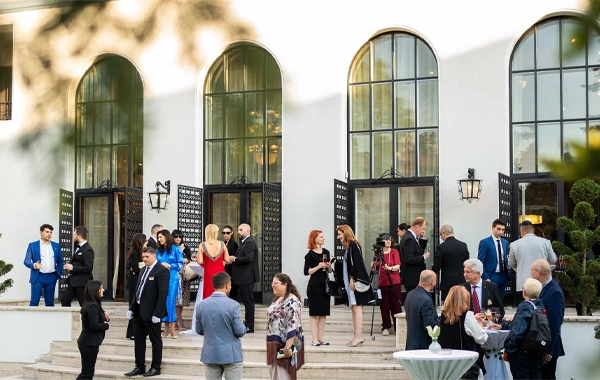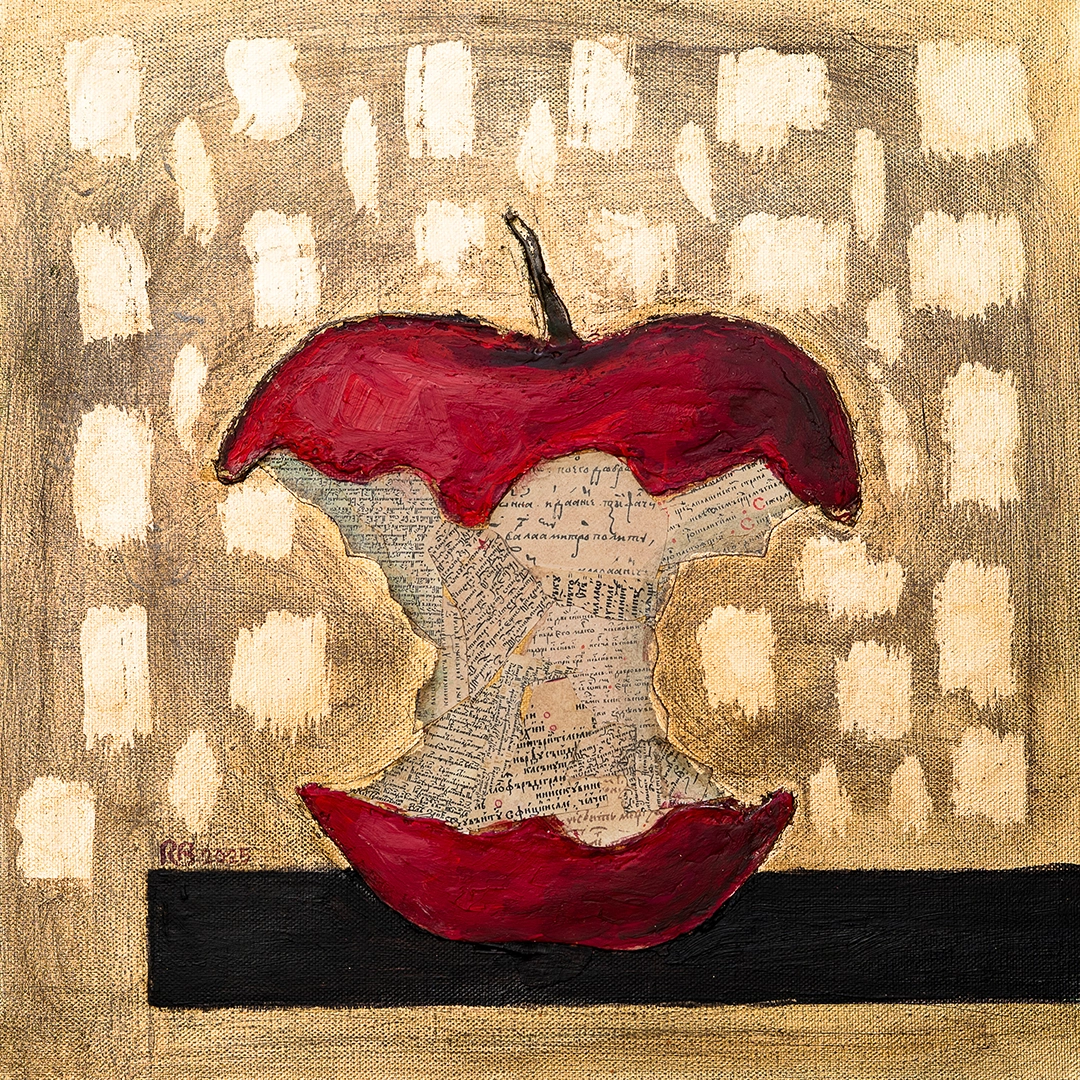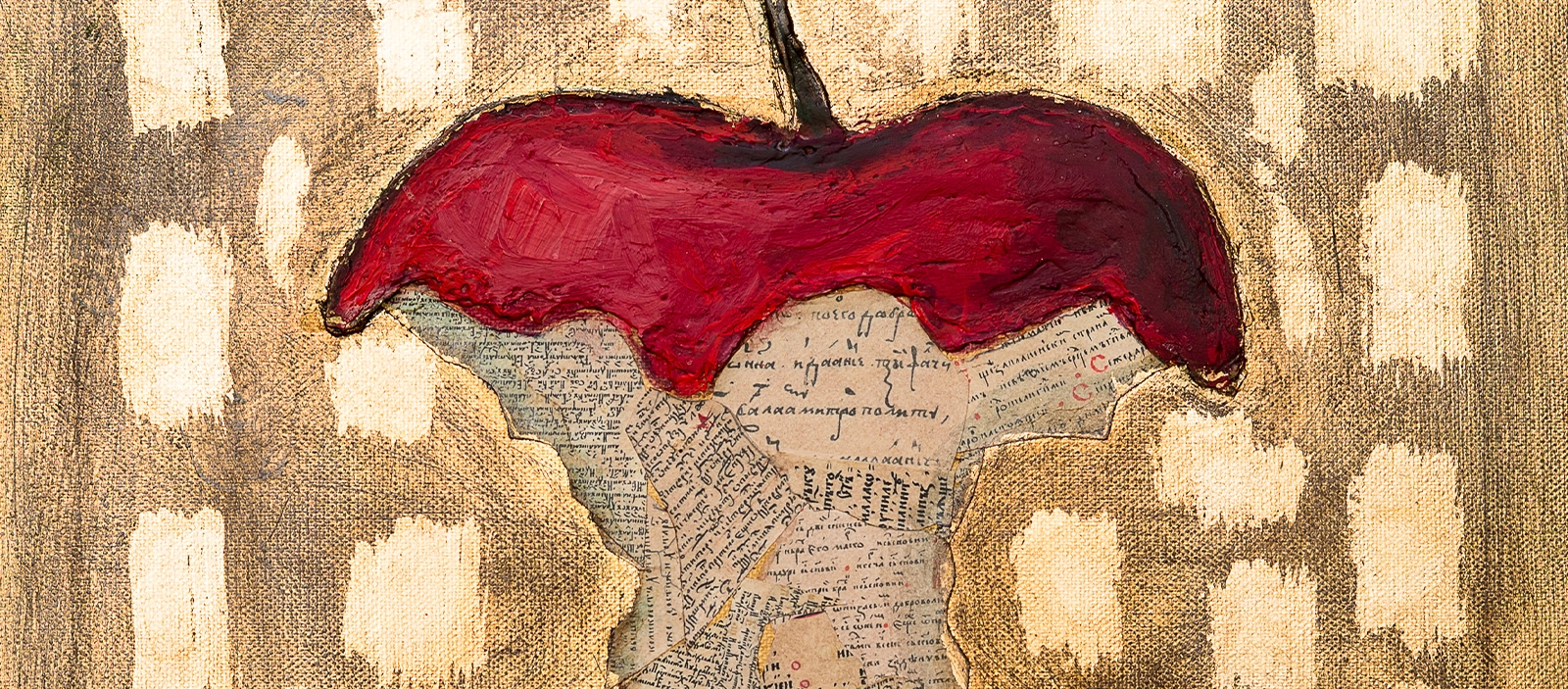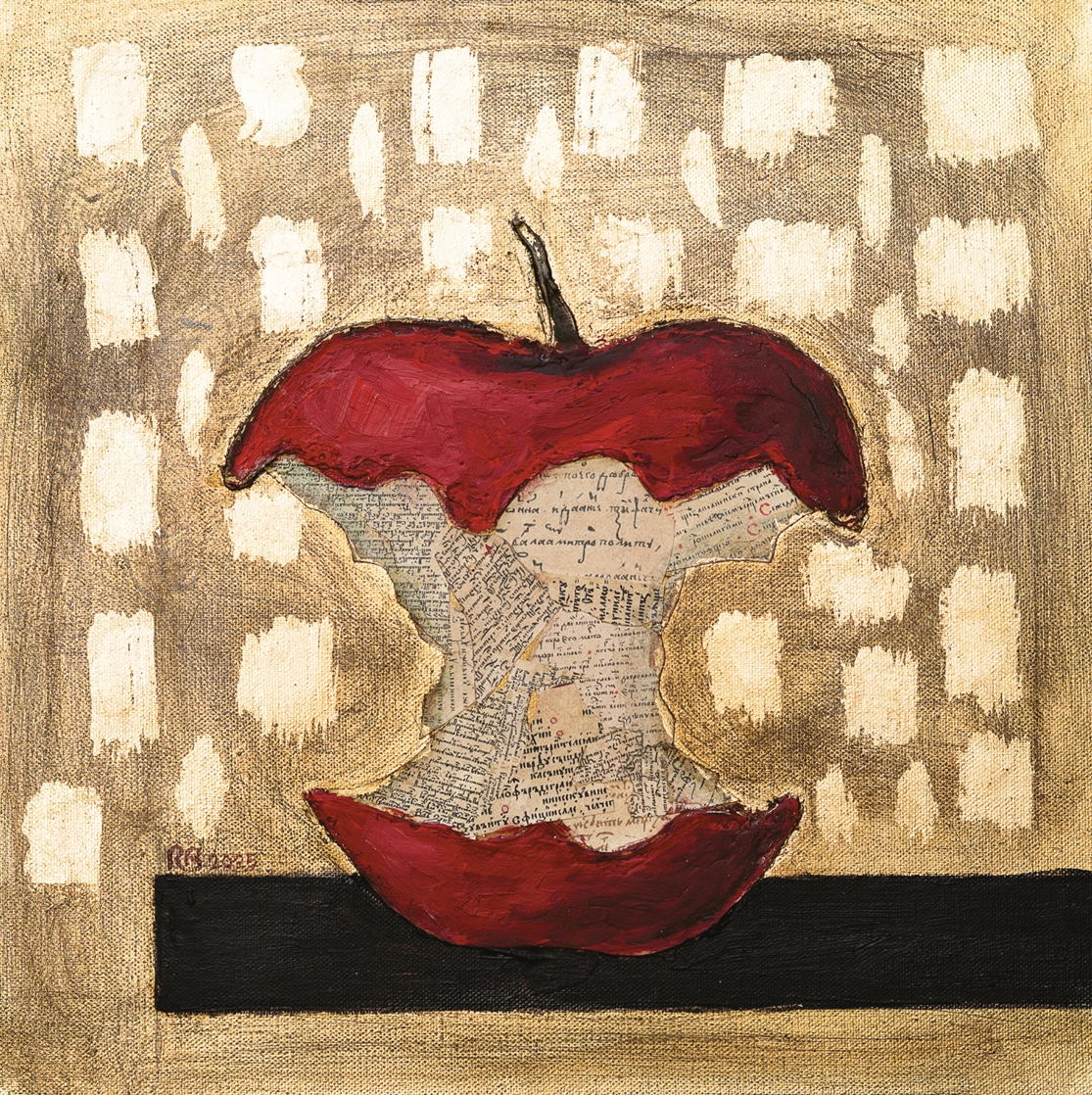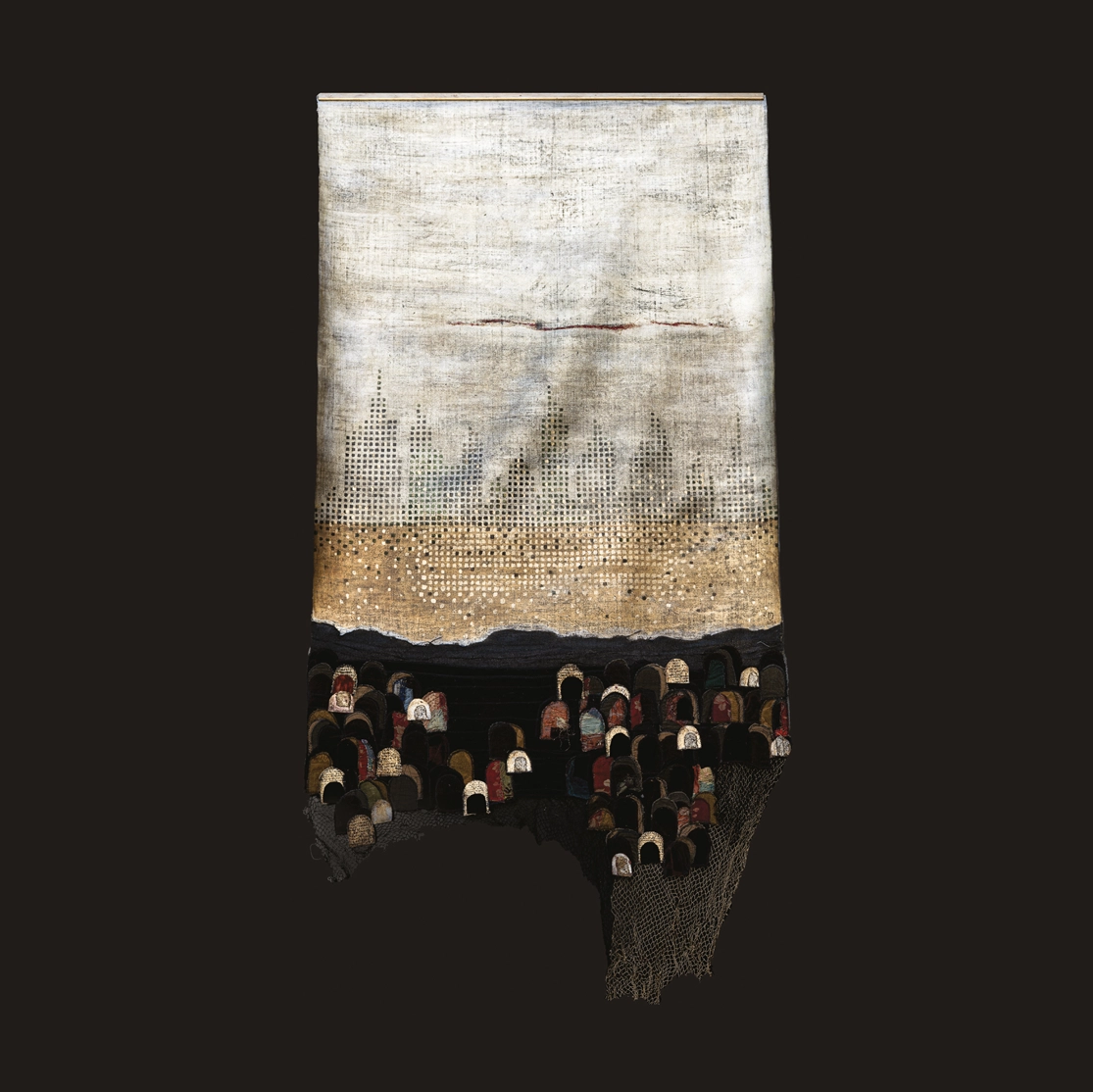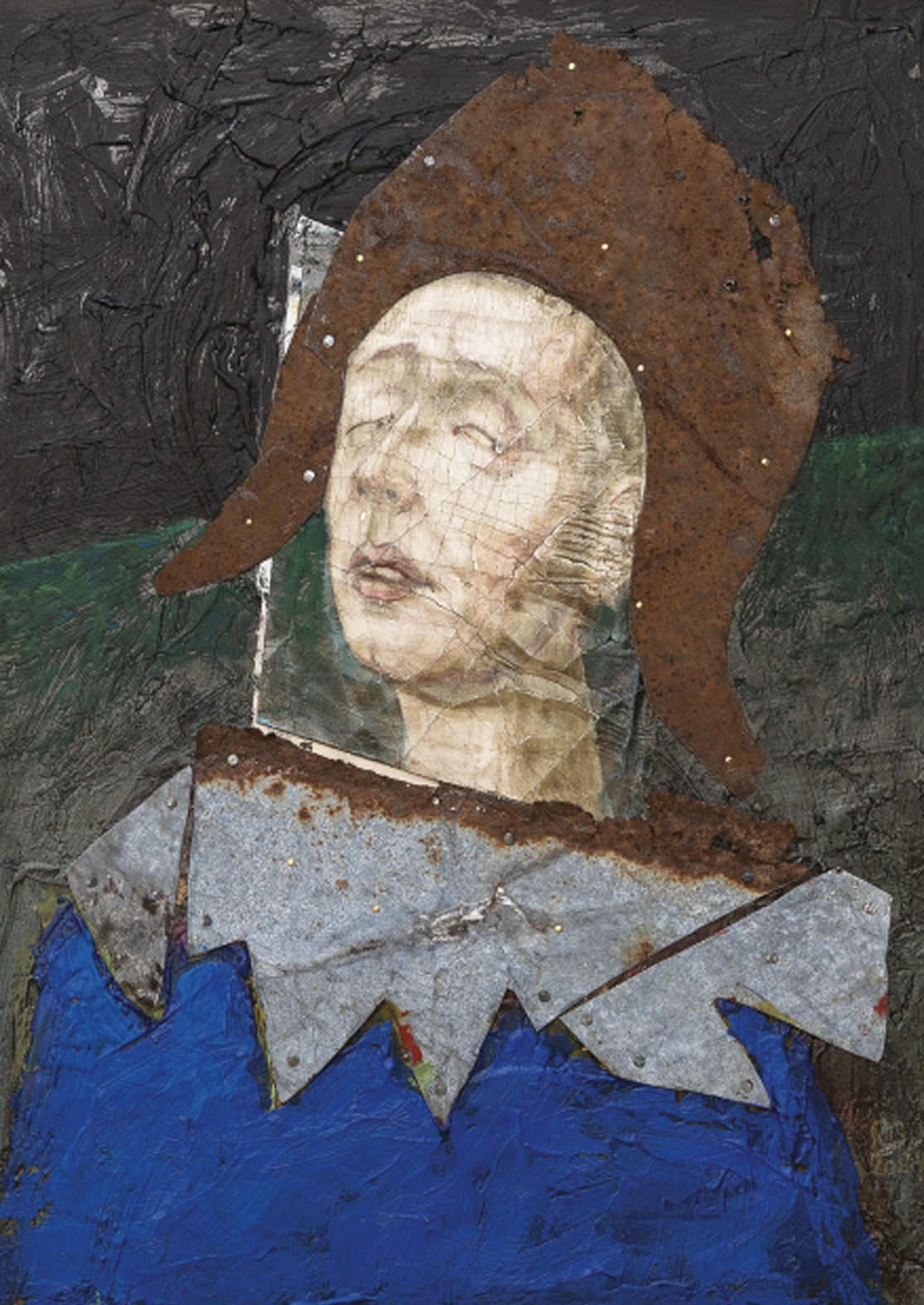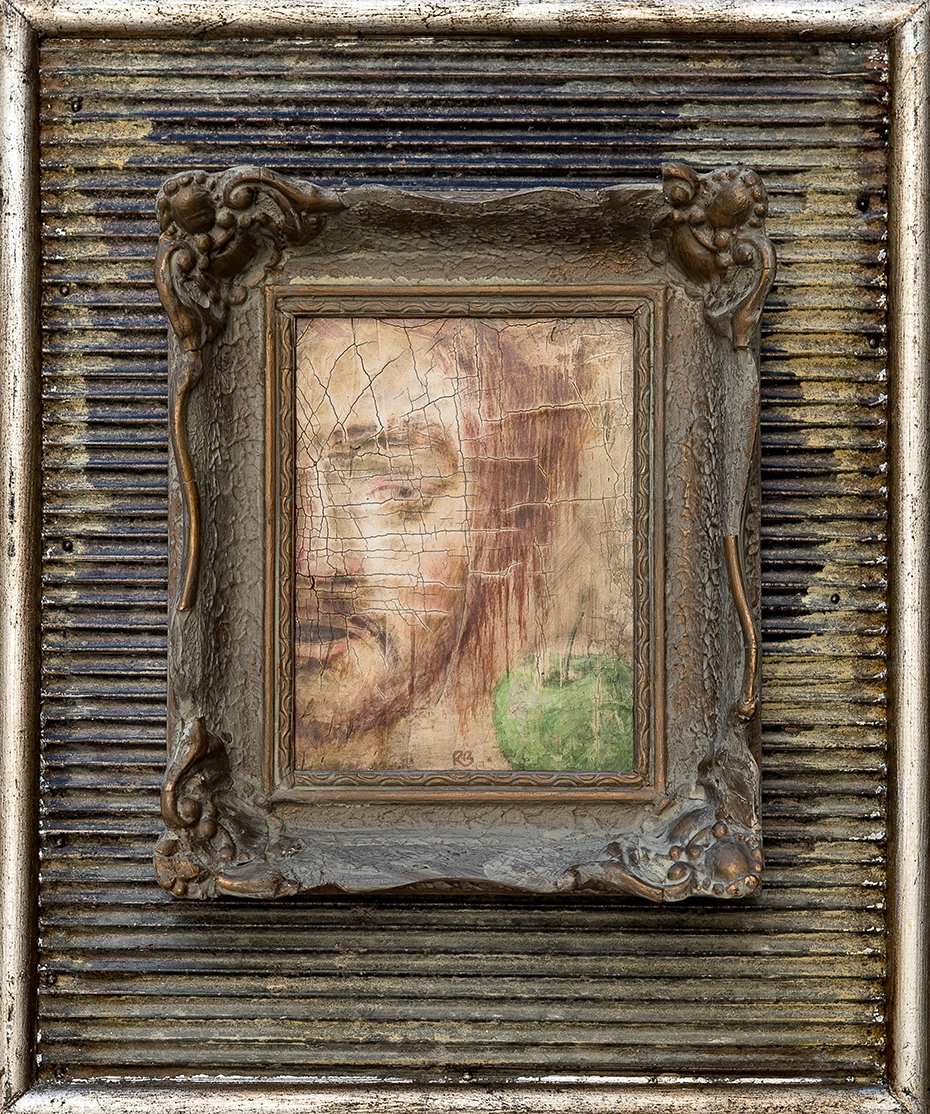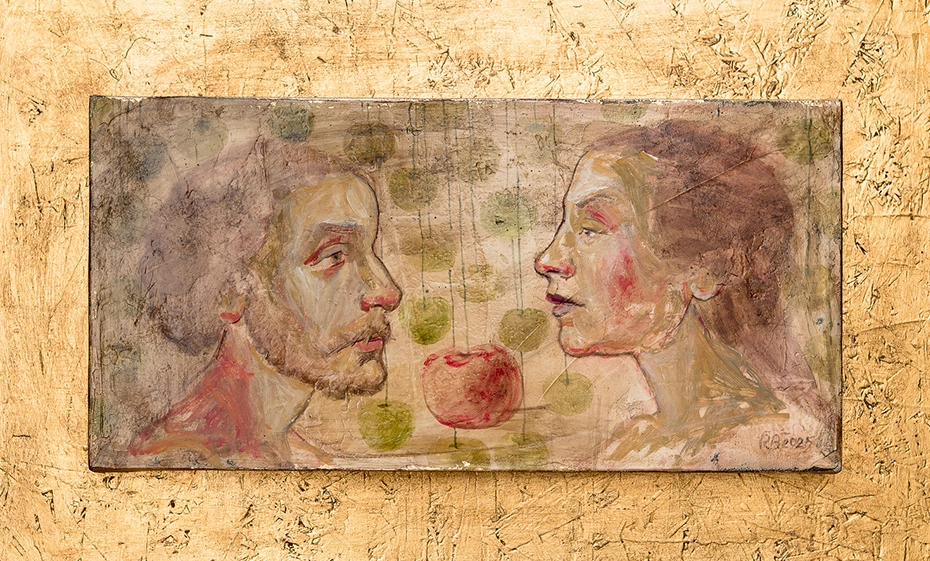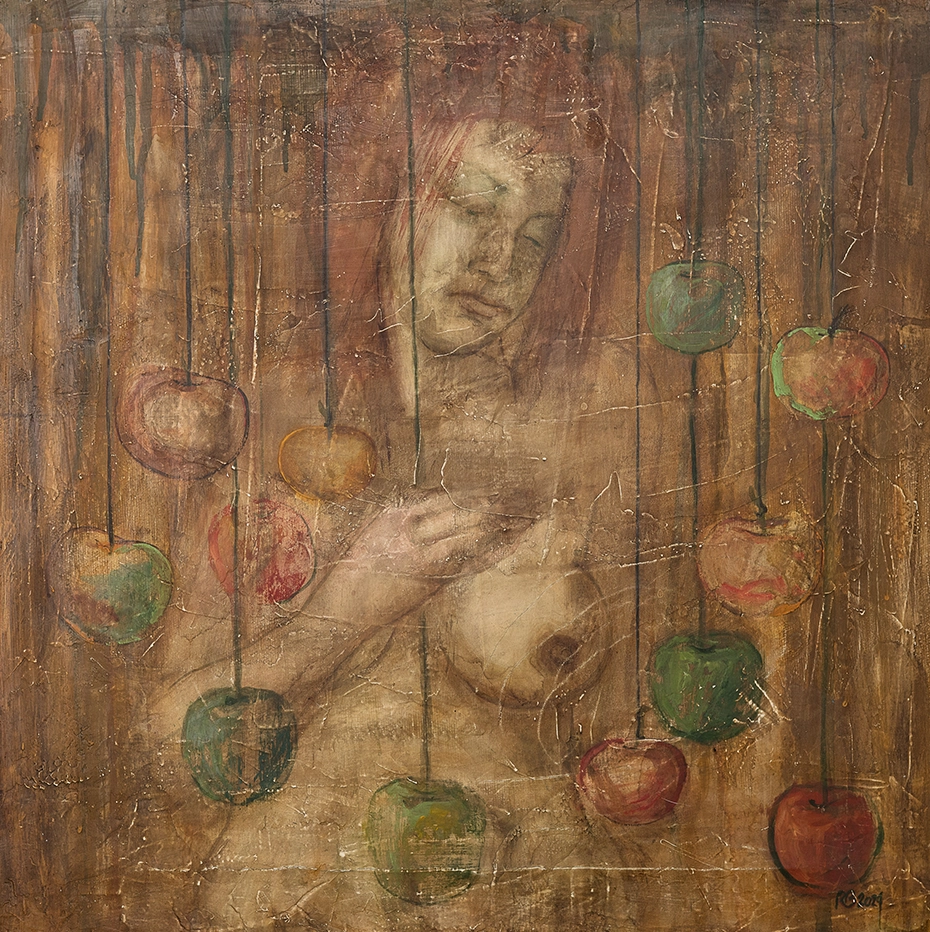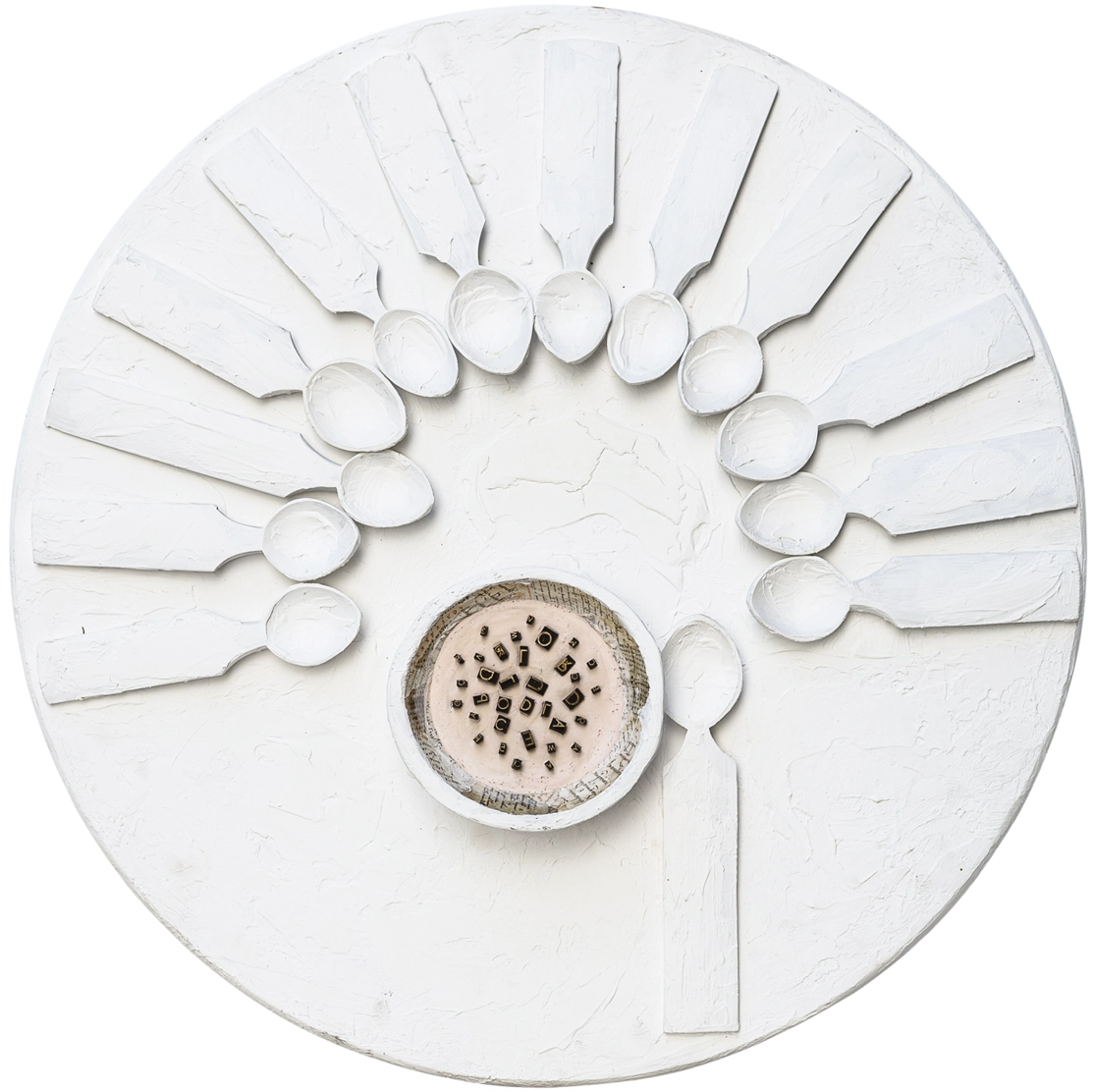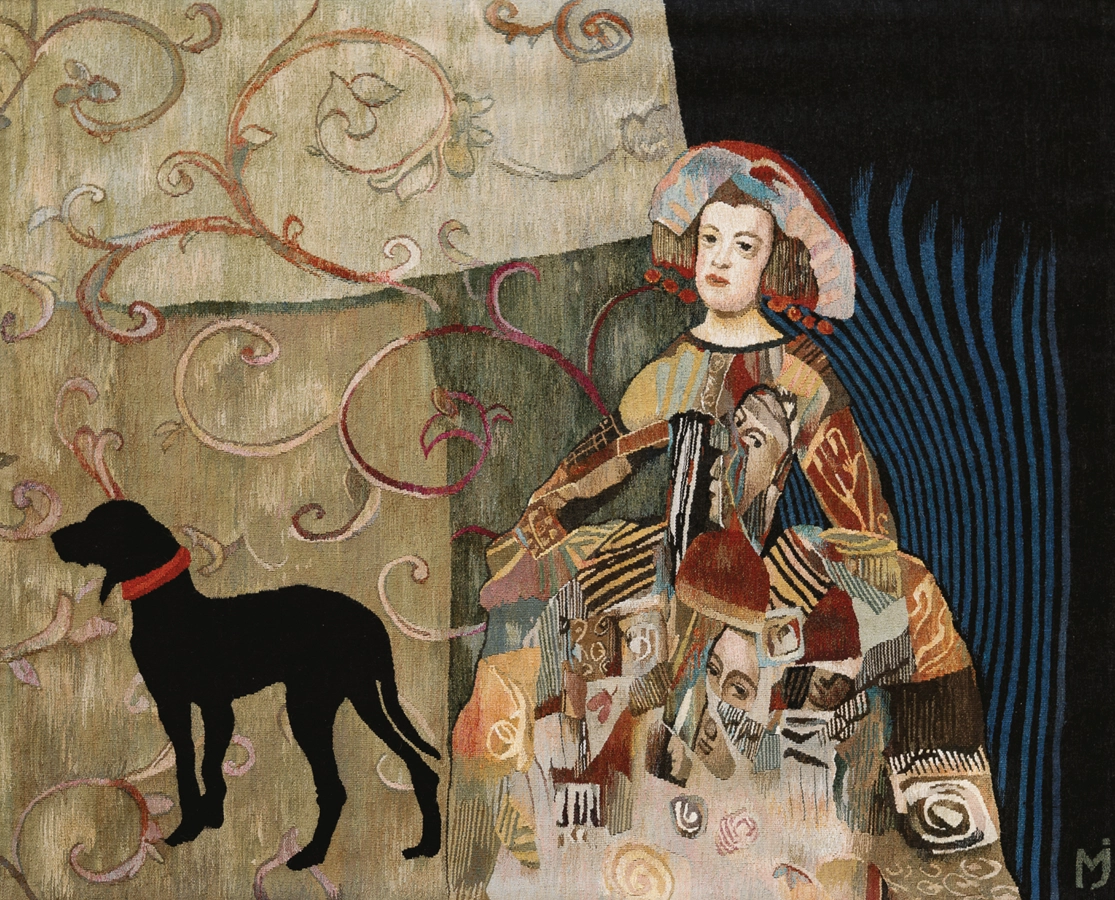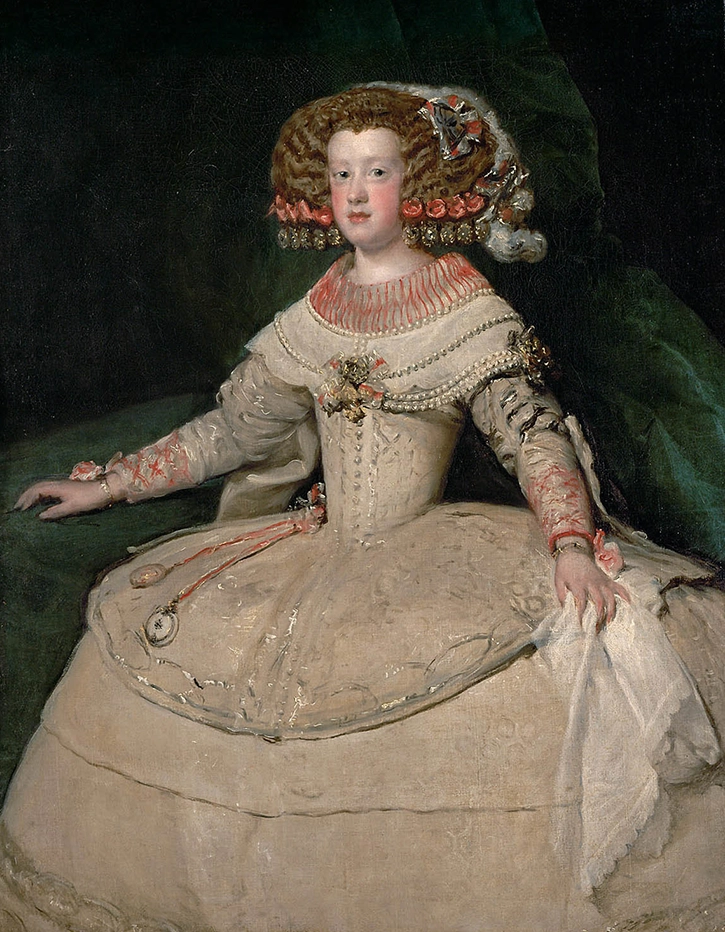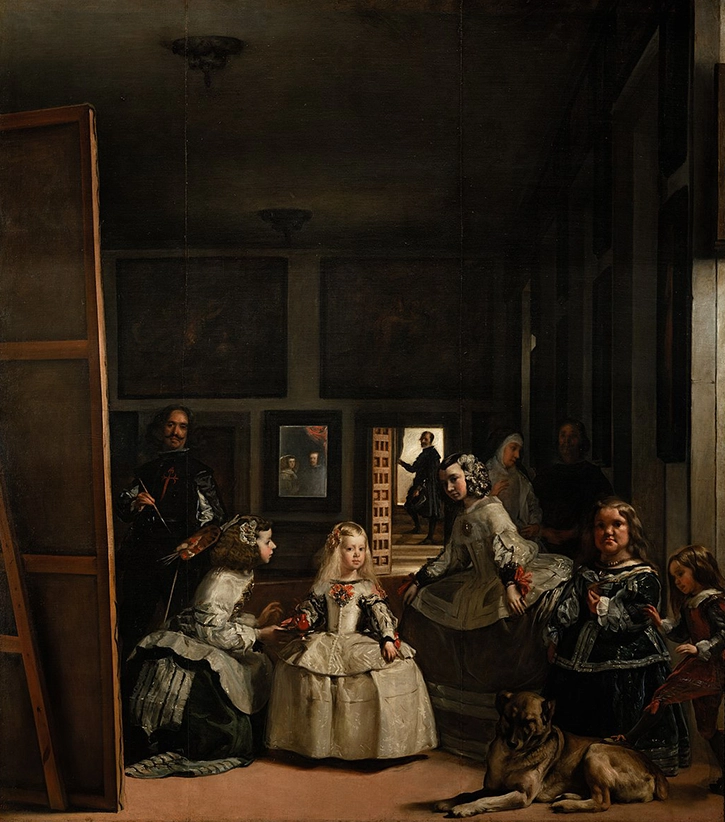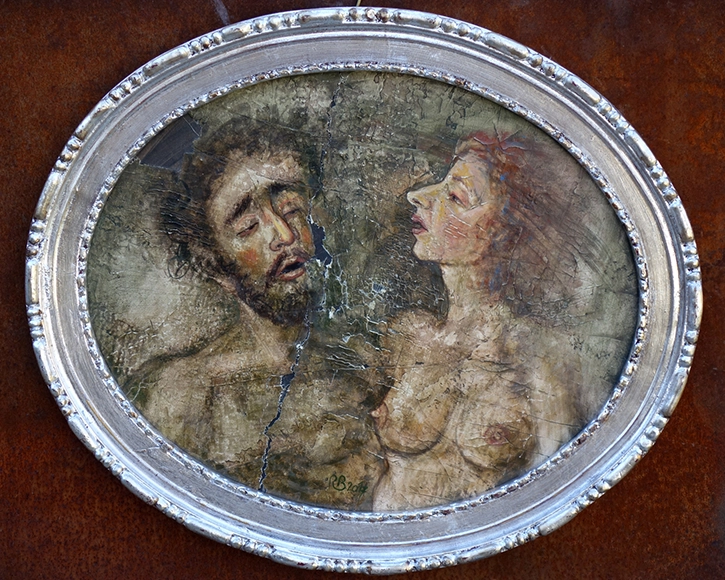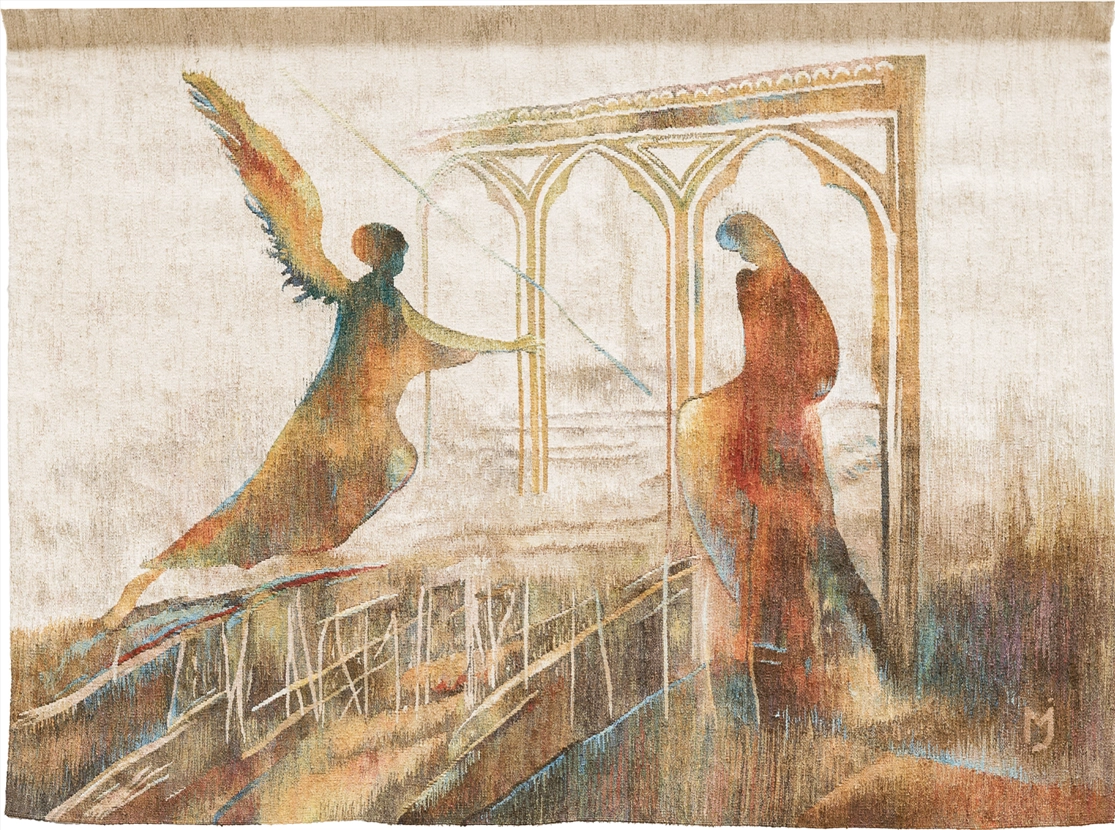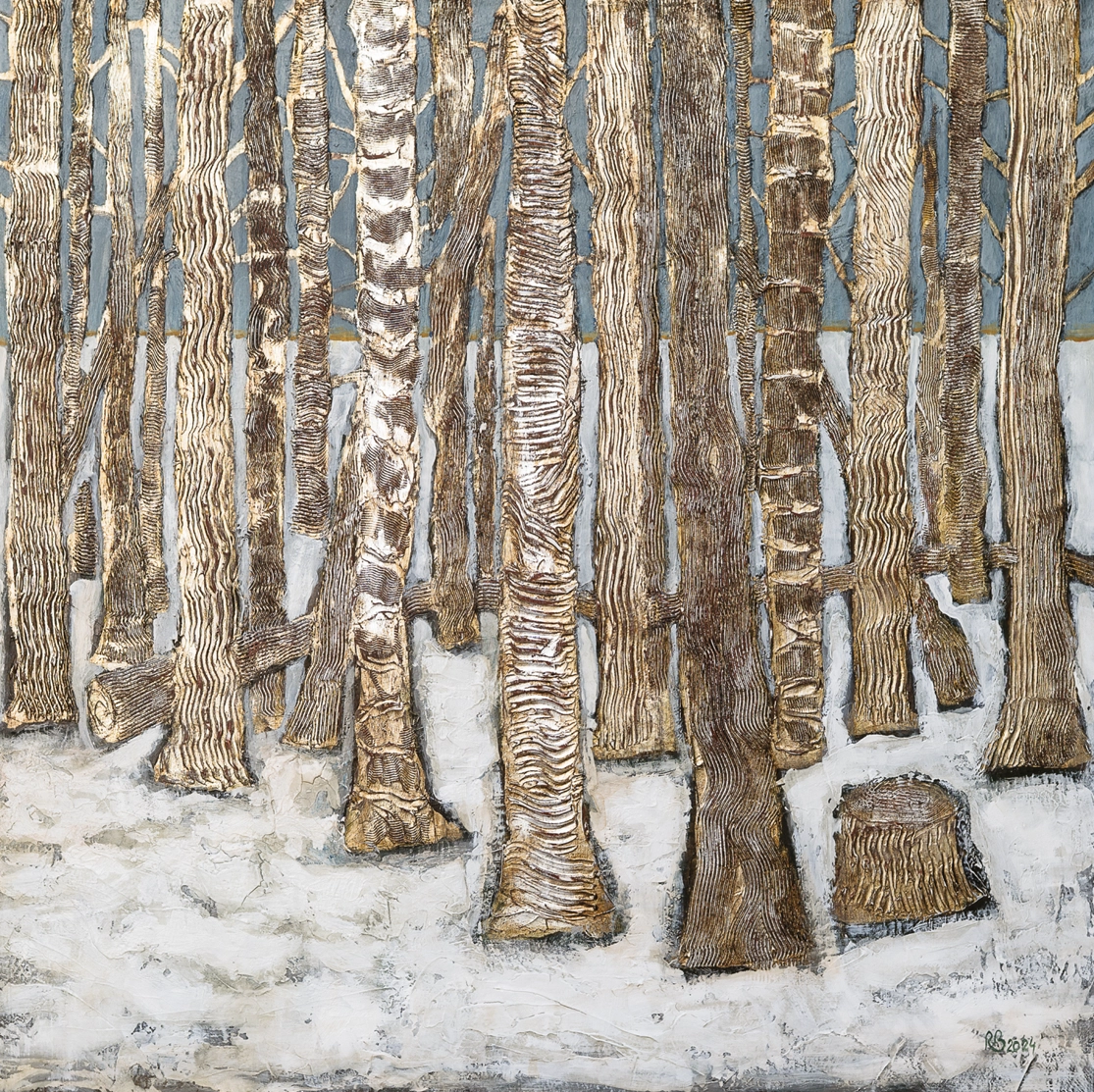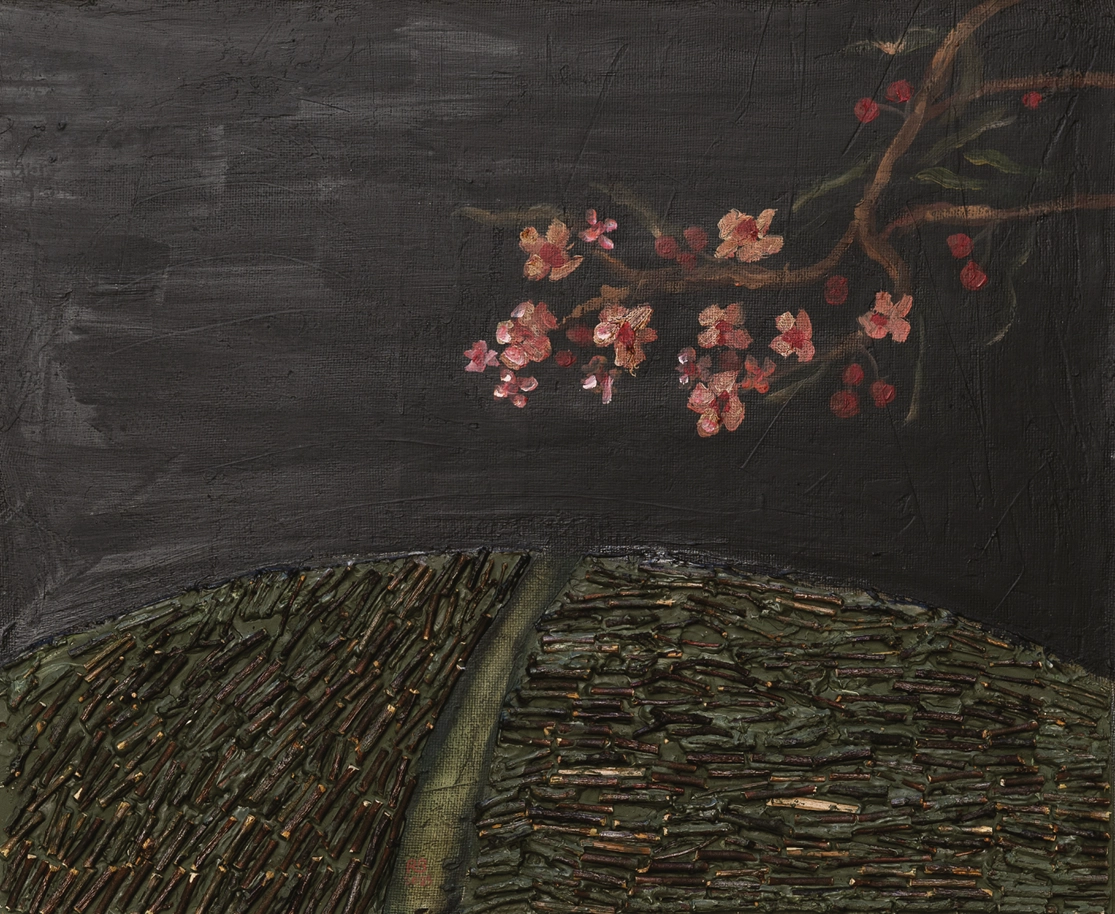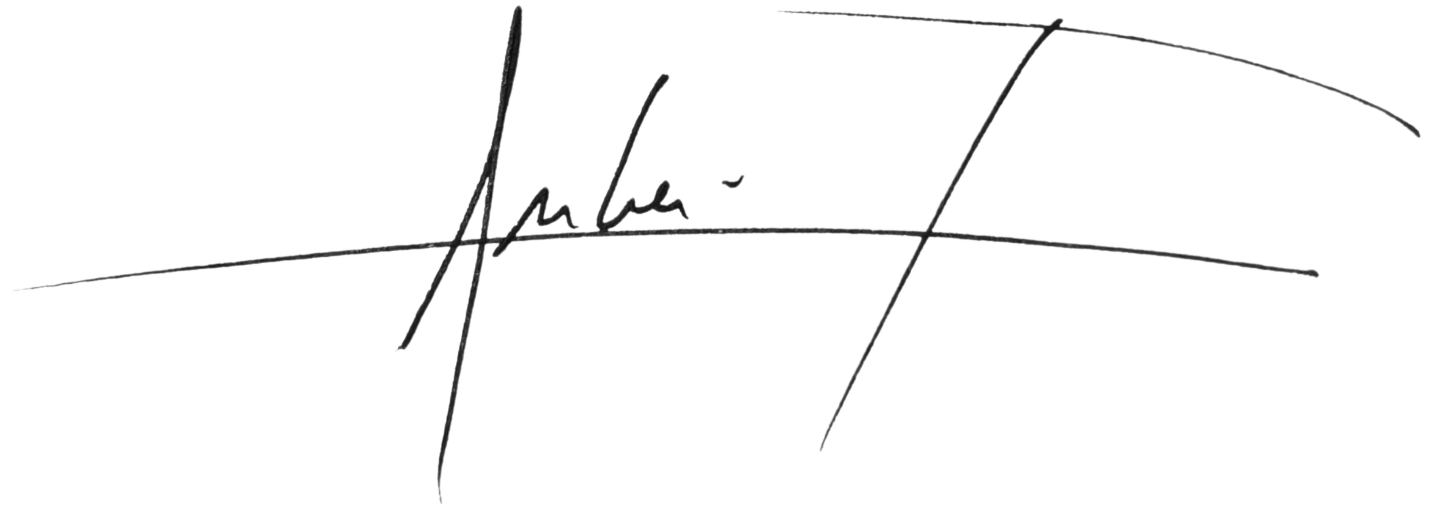The Mystery that Ripens in Silence
For WIN Gallery, the Fruit of Knowledge collection developed naturally, following the exhibition Mystery in Bloom, this time, however, the gallery’s proposal being to access, with curiosity, the creative and encyclopedic universe of the two artists.
Starting precisely from the work entitled Fruit of Knowledge by Relu Bițulescu, the exhibition opens by accessing the Adamic myth, but in a playful key that arouses curiosity. This fruit is represented by an apple, but what surprises, first of all, is the fact that it has been consumed down to the core, and secondly, that the inside of the apple is made up of texts. A perfect visual metaphor for the idea of the fruit-of-knowledge, cast in a satirical light precisely by the aspect of a fruit eaten with appetite, entirely. How much appetite Adam and Eve had when they ate the forbidden fruit, we will never know, the only certainty remaining the Fall. The discourse built by the artists aims at knowledge through art; Marijana and Relu traverse not only biblical themes in the exhibited works, their compositions being explorations of spaces and periods from Byzantine to Egyptian, from the Phanariots to the court of the kings of Spain or even Greek myths.
In silence, quietly, the two artists show similarities especially in terms of the creativity with which they use unconventional materials. Marijana composes tapestries with the help of textile threads but goes beyond the limits of this medium through collages in which she incorporates other materials, such as the work Overpopulated City.
The work remains framed in the artist’s imaginary by golden background elements, also found in the Cultural Migration cycle, this time the lower register of the work depicting precisely "overpopulation". At Relu’s, the triptych Beizadele includes surprising metallic elements, such as sheets cut by the artist to form not only the clothing part of the three characters but also the pictorial surface of the portraits of two of the figures. Moreover, one of the three men has a crown on which real coins are stamped, the aspect of this triptych being one that extremely faithfully renders the conceptual basic idea of the work: forms without substance, sheet metal characters, lacking character, under the rule of unfounded wealth.

